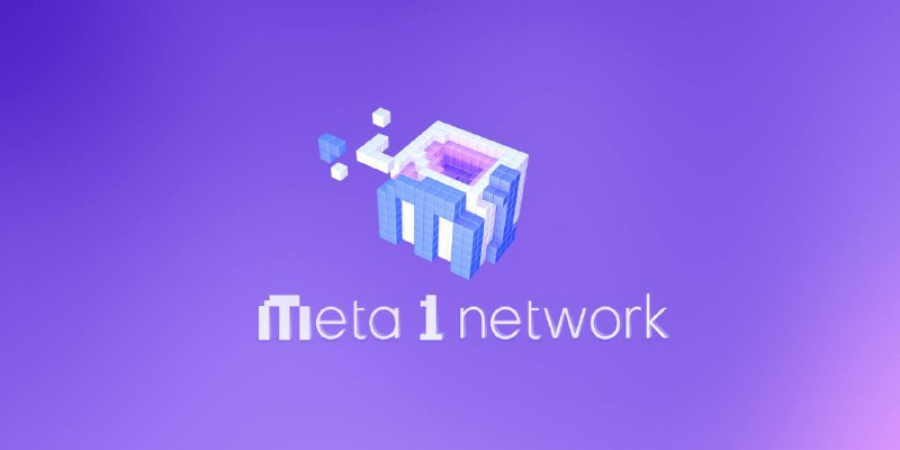Cloud gaming is a well-understood business model. But until now, there have always been limitations as a result of high hardware costs and expensive overheads. Meta 1 (M1) Network, a recently established Singaporean company, solves this problem by decentralizing its hardware networks via the blockchain.
The M1 Network is built to cloud render high-fidelity, digital content, including rendering gaming content in real-time. Both gamers and game developers have been longing for this technology for nearly a decade. Excitingly, Meta 1 has recently completed the world’s first decentralized, real-time rendering network. This decentralized network aims to unlock every piece of metaverse content. The key to their vision is that the M1 Network, due to decentralized hardware networks, removes the majority of ecosystem hardware, operation, and maintenance costs. This provides an ecosystem cost that is less than half of existing cloud rendering services. This means that the cost of maintaining the ecosystem no longer needs to be passed on to the users. Coupled with advanced tokenomics, this enables M1 to provide their cloud rendering services for free to gamers.
At present most GameFi titles are rendered via WebGL. This is a Web Graphics Library, a JavaScript API for rendering interactive 2D and 3D graphics within a web browser. This means that if games become too complex (high fidelity), the user experience slows down (lags) as the browser simply can’t process the game. This results in a bad experience for gamers, but it’s bad news for developers too. From the developer’s point of view, they are limited in the scope and quality of the games they can create. In the highly competitive gaming industry, simply being a GameFi title is often not enough to overcome the limitations of a game developed in WebGL. As metaverses are rapidly developing and developers migrate towards Web3, the underdeveloped infrastructure is exposing a lack of quality and diversity in GameFi titles. Gamers are not getting the GameFi experiences they deserve.
M1 solves this problem with the help of its decentralized rendering network and the nodes that power them. These nodes are comprised of containers. The containers allow developers to develop games as they would have in Web2. Once a game is complete, they simply drop their finished product into M1’s containers, and the connection to Web3 is established. M1 has deployed a geographically distributed array of containers managed through a decentralized P2P (peer-to-peer) network. Each container provides an operating environment for the metaverse, where the necessary computing resources, storage, and rendering power are provided. Developers can work traditionally, and simply deploy their products via containers. With the help of containers, their games are now available in browsers and mobile devices without needing installation. Once in a container, the games all become instant play, on any device, any where. Gamers get the best experience by connecting to their nearest container (node). This is all managed autonomously, and as M1’s decentralized network expands, the user experience will only get better. In this way, developers avoid the unnecessary burden of developing for the blockchain and gain the added value of a larger audience not restricted by the hardware they can afford. M1 provides developers with the ability to create their ecosystem quickly and easily while enabling gamers to enter the metaverse without needing expensive hardware.
To make all this possible, M1 has three categories of network participants: Containers, Indexers, and Checkers.
- Containers provide rendering and computing power to the network. Similar to the Bitcoin mining ecosystem, containers receive rewards for their services.
- Checkers are responsible for ensuring the quality of service being provided by containers and ranking them accordingly. They then provide this information to the Indexers.
- Indexers are the link between gamers and the containers. When a gamer makes a rendering request, the indexers review the list of containers and connect gamers to the most suitable available container.
Conclusion
M1 is an infrastructure platform that is paving the way for both gamers and developers to migrate from Web2 to Web3. Thanks to the revolutionary impact of decentralized hardware networks, M1 can provide gamers with an incredible user experience without the price tag. For developers, M1 can quickly and easily connect their games to the metaverse. Using M1’s containers their games are now accessible to a greater number of gamers, including those in South-East Asia, Latin America, India, and Africa. Previously, gamers in these regions were underserved due to their inability to afford gaming hardware. Now, with M1, gamers all over the world have the opportunity to play any game, on any device, any where, without having to purchase expensive hardware or subscriptions. M1 is unlocking GameFi and metaverse accessibility worldwide, and it’s about time.


